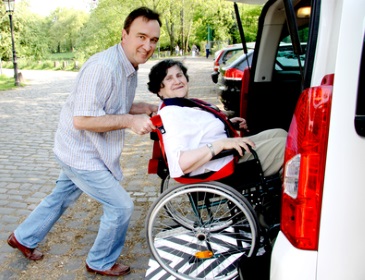Hamilton Spectator, By Sajid Rahman
 When we think of disability, we are often quick to associate this term to someone in a wheelchair, a person who has paraplegia or a person who is blind or deaf. We imagine someone using a cane, a service animal or hearing aid.
When we think of disability, we are often quick to associate this term to someone in a wheelchair, a person who has paraplegia or a person who is blind or deaf. We imagine someone using a cane, a service animal or hearing aid.
But a disability isn’t always something physical we can see. Disabilities are often hidden beneath the surface.
Many of us rely on an inaccurate definition of what it means to be disabled that ignores the difficult reality faced by thousands of Canadians.
It’s estimated that 3.8 million Canadians live with some form of disability — and many are affected by disabilities that are not obvious when we look at them. Intellectual, developmental, memory, learning and mental health disabilities are all examples of disabilities that can go undetected, unless a person chooses to disclose their condition.
The number of people living with disabilities in Canada continues to grow as our large population of baby boomers and seniors grow and age.
We also tend to correlate disability with permanency. Usually, we don’t affiliate the term disability with temporary injuries or mobility impediments caused by an accidental slip or fall, or even sporadic epileptic episodes, for example.
But the Human Rights Tribunal of Ontario has found that these types of hindrances and incidents are disabilities under the Ontario Human Rights Code.
Even people who make use of disability benefits, programs, or have a chronic disorder like epilepsy, may not necessarily identify with the term disabled or disability.
We have to change this way of thinking, which doesn’t capture the true toll that disabilities take on families across Canada. We must redefine the term disability and broaden its scope.
Why is this important?
To create a more accessible Canada, organizations, employers, policy-makers, human rights decision-makers and all other groups must fully understand and grasp the concept of disability and what that term encompasses. To properly implement inclusive and key pieces of legislation, it is essential for lawmakers to consider how people with disabilities define their own needs and experiences.
Ontario has set a goal of being entirely accessible by 2025.
As universities, businesses, employers and organizations begin to take the necessary steps to comply with and meet the standards of the bill, it is important for institutions to start thinking beyond merely the obvious, physical disabilities, and ensure that the changes they are implementing and bringing forth are inclusive to all members of the disability community.
Sajid Rahman is the Show Manager for People in Motion, Canada’s largest disability exhibition taking place on Friday, May 26 and Saturday, May 27 at Exhibition Place, Queen Elizabeth Building in Toronto. Admission for the exhibition is free to all visitors. For more information visit people-in-motion.com.
